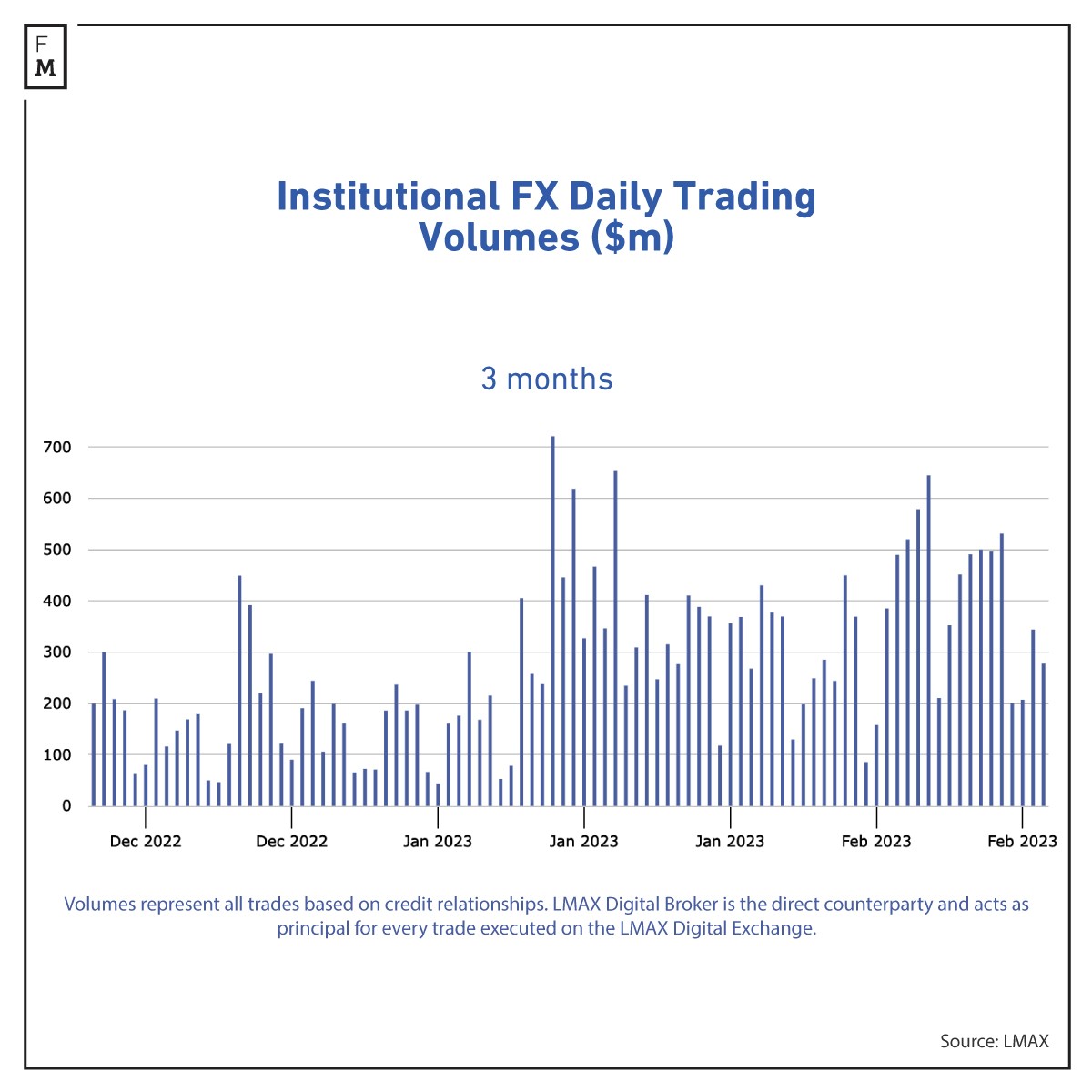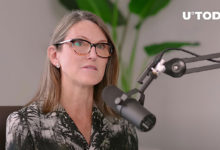Volatility or Demand: Central Limit Book Efficacy Fails to Convince Everyone

A number of platforms recorded a significant increase in central limit order book (CLOB) trading over the last 12 months. LSEG’s average daily volume in 2022 was up 20% year-on-year, EBS Market reported an 11% volume increase over the same period, and Cürex saw volumes rise more than 29% compared to 2021.
CLOB is an anonymous trading system used by the majority of exchanges that matches orders. Buyers and sellers submit orders to the CLOB, which collates all outstanding buy and sell orders. When a new order can be matched against an existing order it gets executed, otherwise, the new order enters the database and waits for another order to offset it.
«We saw some particularly intense individual days,” said Jeff Ward, the Global Head of EBS at derivatives marketplace CME Group. “October 21st, 2022 was the largest day for USD/JPY on EBS Market since November 2016, representing nearly seven times the average daily volume level.”
On the FX trading platform of Cboe Global Markets, average daily volume in dollar-offshore yuan jumped to a record $1.7 billion in July, from $421 million a year earlier. EBS Market, exceeding the previous peak by 17 percent.
— BlackBull Markets (@blackbullforex) August 29, 2018
Not a Clear Benefit
Geoff Jones, the Director of FX Spot Venues at financial markets infrastructure and data provider LSEG, acknowledges that the increase in trading on its CLOB venues over the last 12 months has been a reaction to increased market volatility as well as structural changes and commercial incentives introduced at the start of 2022.
Transparency may be a worthy goal for regulators or the industry at large, but individual market participants are primarily driven by cost and profitability said Edward Bolton, the Institutional Business Development Manager at StoneX Group (the broker-dealer division of INTL FCStone Financial). “CLOBs do not present a clear benefit to many market participants,” he added.

Clinton Norton, the Head of FX Global Sales at pan-European bourse Euronext suggests volumes at the main electronic communication networks (ECNs) grew at a faster rate than the primary CLOBs in 2022.
“This growth deviation is due to the flexibility of ECNs to create bespoke liquidity pools tailored to client expectations for fill rates, real-time trades, and market impact,” he said. “Speed and transparency are paramount in times of volatility.”
The presence (or otherwise) of a link between the increased use of CLOBs and the reduced use of last look has been a widely discussed topic in FX circles for some time. Jamie Singleton, the Chairman & CEO of Cürex Group, an FX-focused execution services, and data analytics provider said the increase in trading volume during 2022 suggests this is the case.
However, the spot market is massively diverse and last look practices are still widely used based on counterparty type and their objectives.
The debate over Last Look
“We believe that the buy side clients we deal with and represent should never be subject to the last look,” he said. “The buy-side and their fiduciary responsibility should never be confused with high-frequency traders and those who seek to take advantage of market data to score trading profits and last look has no place in the conversation when it comes to the buy side. How the banks protect themselves against predatory trading activity is up to them, and we respect that.”
Bolton rejects any suggestion of a link, observing that most bilateral trading is done via bank liquidity providers, almost all of whom have already eliminated the last look.
“Rejection rates on bilateral or multilateral trading have reduced substantially over the past few years, likely a result of FX Global Code implementation among other factors,” he said. “I do not believe the majority of buy-side firms are being harmed at all by the last look in their bilateral trading. This idea has become a talking point of those trying to promote their high-cost execution systems, which invariably benefit high-frequency traders more than buy-side firms.”
According to Jones, the last look offers many market makers more than just the opportunity to reject ‘off-market’ trades. For non-bank participants, it provides a mechanism for leveraging prime broker lines that allows them to distribute rates to more clients than they could if they were trading in only firm markets.
“With increased scrutiny of discretionary hold times we have not observed a shift back to firm order markets, but we are confident that those CLOBs that also provide mechanisms to reduce signaling risk have seen outsized growth compared to those offering full transparency,” he said.
The migration of spot matching to LSEG Exchange technology will allow matching participants to benefit from exchange-based order types and matching paradigms that reduce signaling risk within a CLOB, creating a new ‘best of both worlds’ platform, suggested Jones.
A spokesperson for financial services technology company LMAX Group observed that its view on last look hasn’t changed and that it believes it should not exist on any public multilateral trading venue for reasons of fairness and transparency.
“We recognize that last look may still have a place and be acceptable in disclosed bilateral trading relationships (bank to specific client) if both counterparties prefer to trade this way,” she said. “However, we would always recommend no last look execution given the complexities and diverse nature of disclosures.”
On the subject of ‘hold time’ – discretionary latency associated with last look execution – LMAX Group believes that there remains significant opportunity cost in this period and that on a long-term basis, CLOB-style low latency order-driven execution is more cost-efficient.
Technological Advancements

“Recent moves to minimize hold times are clearly preferable to the period pre-FX global code where hold times could range from 20ms to 200ms, but with the advancement of technology, last look liquidity providers still retain a good degree of optionality when deciding whether to accept a trade in a sub-millisecond window,” added the spokesperson.
“On LMAX Exchange, orders can be refreshed 10-20 times in 1ms so the market probably needs to evolve to measurement in microseconds in the near future to correctly evaluate the opportunity cost of last look pricing versus streamed limit order liquidity.”
Tighter spreads are just one consideration when assessing if good execution has been achieved noted Xavier Porterfield, the Head of Research at the benchmark administrator, NCFX.
“Just as individual dealers will have a skew in their pricing that reflects their own positions, bespoke pools of liquidity will also exhibit skew relative to the overall market,” he said. “As an example, the best prices displayed on a multi-dealer platform’s CLOB might be 14-16, while a single dealer platform might be showing 16-17. It might appear that the latter has the better pricing (tighter spread), but in fact the anonymous pricing available on the CLOB is more advantageous and from a regulatory standpoint, easier to prove best execution for a buyer.”






 Bitcoin
Bitcoin  Ethereum
Ethereum  Tether
Tether  USDC
USDC  TRON
TRON  Dogecoin
Dogecoin  Cardano
Cardano  Bitcoin Cash
Bitcoin Cash  Chainlink
Chainlink  Monero
Monero  LEO Token
LEO Token  Zcash
Zcash  Stellar
Stellar  Litecoin
Litecoin  Hedera
Hedera  Dai
Dai  Cronos
Cronos  Tether Gold
Tether Gold  OKB
OKB  Ethereum Classic
Ethereum Classic  KuCoin
KuCoin  Gate
Gate  Algorand
Algorand  Cosmos Hub
Cosmos Hub  VeChain
VeChain  TrueUSD
TrueUSD  Tezos
Tezos  Dash
Dash  Stacks
Stacks  IOTA
IOTA  Basic Attention
Basic Attention  Theta Network
Theta Network  Decred
Decred  NEO
NEO  Synthetix
Synthetix  Qtum
Qtum  Ravencoin
Ravencoin  DigiByte
DigiByte  0x Protocol
0x Protocol  Nano
Nano  Zilliqa
Zilliqa  Siacoin
Siacoin  Numeraire
Numeraire  Waves
Waves  BUSD
BUSD  Status
Status  Pax Dollar
Pax Dollar  Enjin Coin
Enjin Coin  Ontology
Ontology  Hive
Hive  Lisk
Lisk  Steem
Steem  Huobi
Huobi  NEM
NEM  OMG Network
OMG Network  Bitcoin Gold
Bitcoin Gold  Augur
Augur  Ren
Ren  HUSD
HUSD